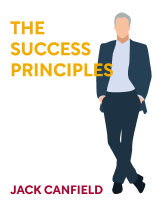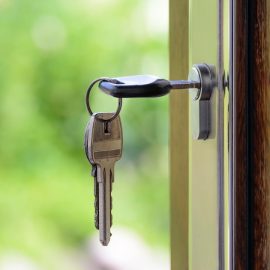

This article is an excerpt from the Shortform book guide to "The Success Principles" by Jack Canfield. Shortform has the world's best summaries and analyses of books you should be reading.
Like this article? Sign up for a free trial here .
Do you feel you have control over your technology use? How do you manage to keep the never-ending stream of information through digital devices at bay?
In the last 20 years, the world has undergone some major advancements in technology. While it’s exciting when new technology takes over the world, it’s important not to let it take over your mind because exposure to too much information has a negative effect on your well-being.
In this article, we’ll share tips to embrace digital tools that make life easier while being selective and strategic enough to prevent feeling overwhelmed.
Limiting Information Exposure
The digital age has produced myriad resources for accessing information and learning new skills. For example, if you want to learn how to make sourdough bread, there are plenty of YouTube tutorials to guide you. However, there is so much information that it can be overwhelming. Consider taking steps to limit the information you consume and the technology you use.
Exposure to too much information is harmful because:
- There’s so much information to consume, it requires a large portion of your time.
- The information is often negative, and many issues are beyond your ability to change.
- Most information has no bearing on helping you achieve your goals.
Due to these negative factors, choosing to limit time with media can positively affect your well-being, freeing your time to focus on things you care about. Instead of consuming all information you encounter, try these tips:
- Ask yourself if the information you’re about to consume is something important that you’ll use right after you consume it. If you answer no, then don’t.
- Exercise discipline on the web. It’s easy to let ourselves drift from website to website, article to article, via links and hyperlinks. Exercising discipline means stopping yourself from mindlessly drifting through the web.
- Limit yourself to information that helps you toward your goals or other purpose.
- Try a one-week information diet. This means avoiding all news media, like magazines, newspapers, websites, and more. Reading books is allowed, but only fiction; you can watch TV, but only shows unrelated to news.
- Try out a new habit for 30 days to limit your media consumption. For example, try going 30 days without looking at Instagram.
Use Technology Wisely
It’s important to be open to trying new technologies that can make your life easier and allow for more fulfilling uses of your time. But you don’t need to adopt everything. To stay sane in this information-overloaded world, responsible technology use is key. Follow these 10 tips to maximize your relationship with technology.
Tip #1: Generate a Brilliant Idea, and Find the Technology to Support It
You might think you need the best technology available to achieve the most success. But if you have excellent technology and a bad idea, you’re not going to succeed. Focus on your ideas first and technology second. For example, Łukasz Jakóbiak, a resident of Poland, wanted to create a television show, but he didn’t have the resources to buy equipment or rent a studio. Instead, he decided to film the show in his tiny 20-square-meter (215-square-foot) apartment. He records video with two iPhones and shares it online. Using inexpensive resources allowed Jakóbiak to succeed.
Tip #2: Identify the Resources You Need to Learn a New Technology
To learn a new technology, search for resources to help you. Given all the information we have access to, there are few excuses for not learning how to use a new technology that you’d find useful. Having access to these resources allows you to learn quickly and move on to learn additional skills.
Tip #3: Bookmark Frequently Visited Sites
Even though most Internet browsers automatically complete the rest of the web address once you start typing, typing in addresses for sites you frequently visit still wastes time. Instead, use a bookmarks tool to get to your most important sites quickly.
Tip #4: Use a Passwords Manager—and Log Out Every Time
We have so many accounts on so many websites that it’s tempting to create a simple password to use on multiple sites. Or you might create lots of different passwords and list them in a document. Both of these methods leave you vulnerable to hackers who can use programs to guess less secure passwords or could gain access to your password list. Instead, use a password manager service to generate and secure passwords for all of your accounts and profiles. They’ll also remember your usernames. Because this service streamlines logging on, log out of your accounts when you’re done using them—this prevents your usernames and passcodes from being stolen.
Tip #5: Recognize That the Digital Age Offers No Guarantee of Privacy
There are many ways the information you share online can be accessed or spread. For example, people can take screenshots of photos and share them in other locations apart from where you posted them. Hackers can intercept email and read it while it’s being sent. Canfield recommends assuming that anyone could see your online activity and keeping this in mind as a guide for what you decide to do and share online.
Tip #6: Use the Cloud or Other Services to Backup Your Devices
Cloud storage allows you to store information and files on a server rather than on your devices. It was first developed for storing files that take up a lot of memory, like movies, but now it’s available to store anything, and can act as a back-up in case your devices are damaged or stolen.
There are two ways to use cloud storage:
- Store everything in the cloud through a service like Dropbox.
- Save files regularly to a back-up hard drive, and periodically back them up to the cloud.
Though these services are generally reliable and private, there are no guarantees. If you have files that must remain private, consider storing them only on your devices. However, you run the risk of losing them if the device is stolen.
Tip # 7: Limit Yourself to Specific Activities on Each of Your Devices
Most devices allow you to do multiple activities, such as browsing the Internet, sending email, and taking photos. But because we have so many devices available, we often let ourselves do whatever task we feel like on whichever of our devices is nearby without being strategic about which device we’re using or limiting our use. Plus, having a device on hand at all times has created the expectation that you’ll respond instantly to any kind of communication, from texts to emails.
Canfield offers one main suggestion to more effectively use your devices: Assign specific purposes for each device, and stick to it. Canfield recommends the following uses:
- Smartphones: calls, texting, taking photos, and using apps like Instagram. Phones are designed primarily for communication with others, so limit their use to communication purposes rather than consuming information.
- Tablets: Browsing. Tablets are optimized for consuming information rather than typing or taking photos, so stick to a tablet when you just want to explore online.
- Computers: Work-related tasks, such as email, writing a blog post, or making a spreadsheet. Computers are optimized for many things, but work-related tasks are where they shine. Browsing social media or using your computer to text during work can distract you from doing your daily tasks.
Tip #8: Limit Your Time Managing Email
Managing email is one of the most time-consuming activities for any professional. It’s common to spend three to four hours per day dealing with email. To reduce your time spent on email, try these tips:
- Cut down on nonessential email. This could include work emails that are more social than professional or general newsletters that aren’t useful to you anymore. Though you might worry you’d hurt your colleague’s feelings by asking to unsubscribe, reducing the volume of email you get could free your time for other work. Canfield estimates that reducing your email volume by half would free 90 minutes of your day for doing other tasks. In a year, this would amount to 375 hours, or a little over nine 40-hour work weeks.
- Hire an assistant. Hiring an assistant to go through your email each day and flag the ones you must respond to can significantly cut down the amount of email you handle. Canfield’s assistant flags the most important five emails for him to respond to each day.
Tip #9: Periodically Review Charges for Technology Services
With so many subscription-based services automatically charging you each month, it’s easy to lose track of what you’re being charged, leading you to pay high costs for services you seldom use. If you’re a business owner, you could be especially vulnerable to paying for services you don’t use. Periodically go through expenses to identify any services you’re not using that you can cancel.
Example: A friend of Canfield’s who runs an advertising company discovered they were being charged about $1,500 per month—$18,000 per year—for services they no longer used. Canceling the services allowed them to put that money toward better uses.
Tip #10: Make a List of Technology Annoyances and Address Them
In Principle 28: Finish Your Projects and Declutter Your Life, Canfield suggests listing things that annoy you and projects that you have yet to finish. Similarly, create a new list for technology annoyances or projects you have yet to finish. Then, systematically address each of them so they’re no longer barriers to your success. Canfield offers a series of tips and activities to work through your list on his website.

———End of Preview———
Like what you just read? Read the rest of the world's best book summary and analysis of Jack Canfield's "The Success Principles" at Shortform .
Here's what you'll find in our full The Success Principles summary :
- The 67 principles to help anyone achieve their goals and dreams
- Why achieving your goals requires you to invest your time and effort
- How to take responsibility for your own life






